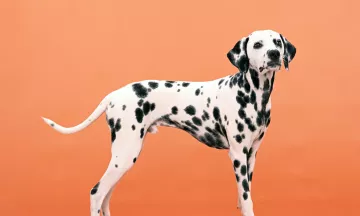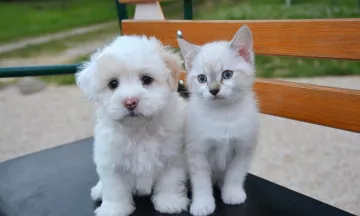In addition to eating, exercising, and physical care, your dog needs social care. Dogs need to have a sense of security, and they need to know that they are part of a group and are understood and appreciated. Affection is the way you can provide this. Moreover, affection is an important and fun way of rewarding your dog, especially during training.
Dogs, like humans, have a rich emotional life. They can be happy, angry, scared, anxious, insecure, sad, lonely, or excited. They have their own dog’s way of communicating their emotions, so it’s important to understand their language. When you pet your dog, you send a message, and he responds to that message in dog language. That is why it is important to give your dog the right kind of affection so he gets the right message.
Start once your dog seems calm
Before you pet your dog, notice whether he is calm and relaxed. (No jumping or climbing on you. You don’t want to reward those behaviors.) Is the dog afraid or stressed? Insecure dogs can benefit enormously from getting the right kind of affection; they get used to being touched in a friendly and safe manner and can learn how to relax. But it’s absolutely critical to make sure first that the dog is open to contact: let him quietly sniff your hand and then start petting him gently.
Watch how the dog reacts. Does she lick her lips, or does she gasp or yawn? If so, she is probably not feeling at ease. Then it’s best to take a step back. Are her ears and tail relaxed, will she sit quietly in front of you or even lie down, maybe sniffing at you a bit? She is telling you: keep it up! You can now pet your dog using long, calm strokes.
Read more about the body language signals of your dog here

Approach the dog safely
A dog feels safe if he can see your hand; he won’t feel attacked from his blind spot. Petting the neck, along the flanks, and behind the ears is non-threatening and most dogs like it! A stroke on the flank is a nice way to pet and it means: we are buddies. Rubbing his back means: let's play! Petting around the mouth and the ears is great for timid dogs and it means: I respect you. And petting the chest is the ultimate – bliss!
Equal partners
Suddenly petting the top of a dog’s head can be very overwhelming for your pooch. A hand on top of the head means: subject yourself to me. Although some people think that “dominating a dog” is good, you actually don’t want to do that. It’s better to create a good relationship with your dog based on friendship and respect, so approach the dog in a way that feels safe. Once you start petting, he may like to be stroked on the top of the head, but never start out that way, certainly not with a dog you do not know or with insecure dogs.
Cuddling: no. Talking: yes, please!
We think our dogs are so cute that we want to hug them. But dogs do not understand this gesture very well – they feel trapped by the arms around their body. It is not safe and the dog can respond aggressively when you don’t expect it. It is also not a good idea to put the front legs of a dog on your shoulders and hug your dog that way – legs on your shoulders means to a dog: I am in charge of you. A dog doesn’t want that at all and it will confuse them. So stay away from hugs and stick to gentle petting.
What you can do, though, is talk to your dog. It’s a very effective and important way to give affection. You can put a frightened dog at ease or calm an overexcited dog down by talking to them. Be aware of your own state of mind: if you are tense or scared yourself, the dog will sense it in your voice. Make sure you are relaxed and then enjoy talking to your dog!
Read more about the importance of talking to your pet here
In short:
Dos:
- Pet with long calm strokes
- Confine petting to the flanks and around the neck
- Talk to the dog
Don’ts:
- Approach a dog from above
- Hug
- Raise energy or get overexcited around a dog
Does your dog deserve to receive EXTRA love and attention? Book a personal dog sitter so your dog won't feel lonely ever again! -> Find a dog sitter






